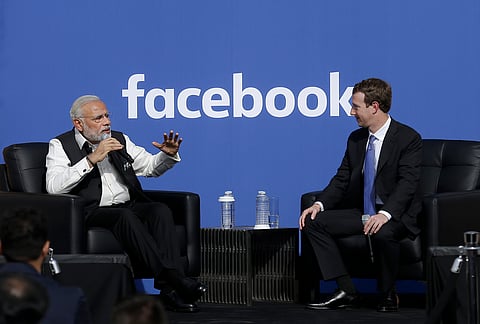

India's $500 billion Foreign Direct Investment (FDI) equity inflows milestone arrived theatrically at a time when good news is rather slim.
It took us no less than two decades to get here, but the 13% growth in FDI during April-September at the peak of Covid-19 and despite 2020 being a crazy year, deserves one long boast.
According to the Department for Promotion of Industry and Internal Trade (DPIIT), FDI equity inflows alone jumped from $23 billion in 2000 to $500 billion now. The government, which took a victory lap, maintains that there's a growing interest among overseas investors and that India will be the most attractive emerging market in 2021.
But the details on the dashboard begs the question whether the foreign investor momentum is all it's cracked up to be?
That's because of the $40-billion FDI during April-September, $10.2 billion came from one single source -- the Reliance Jio-Facebook deal. Besides, Reliance Retail too brought in a bonus $1-2 billion, but such big-ticket deals aren't commonplace. Will India remain right in the wheelhouse depends on the extent of the economic slowdown, the government's willingness to spend and reform and the subsequent pace of recovery.
Even assuming $100 billion FDI comes in the next two years, it translates to a mere Rs 8 lakh crore or a tiny proportion of the Rs 110 lakh crore needed as an investment for a $5 trillion economy, or Rs 375 lakh crore of GDP, according to Care Ratings.
It means, higher FDI is a pre-requisite as it's a major non-debt financial resource and comes via four broad components -- equity (through automatic route or by approvals), equity capital flows into unincorporated bodies, reinvested earnings and other capital.
Notwithstanding the slowdown in FY20, FDI inflows touched $73 billion, registering a high-teens 18% growth. A year before, in 2019, India was among the world's largest FDI recipient countries and as FDI inflows jumped to $51 billion, our global ranking improved from 12th slot to under-10. But it hasn't been a smooth ride all the while.
Growth in FDI inflows fell to 8% in FY17 and slid further to 1.2% in FY18 only to recover marginally to 1.7% in FY19. In fact, during troubling times such as FY10, FY11 and FY13 when the global economy was reeling under the financial crisis, FDI inflows took a severe knock contracting by 10%, 0.8% and 26% respectively.
In line with the trend, as Covid-19 wreaked havoc globally, FDI in Q1 of FY21 plunged by 60% to $6.5 billion. India's performance was worse than the global projections by the UN Conference on Trade and Development (UNCTAD). Things only took a turn for the better thanks to the underlying belief of investors in the strength and resilience of our economy.
But even as FDI inflows began to look up, Foreign Portfolio Investors (FPIs) offloaded $14 billion from the Indian bond market so far in 2020. That's the largest amount sold in a single year to date. Still, analysts won't worry much as FPIs invest in financial assets of a foreign country and heavy outflows are likely to be viewed less favourably than a fall in FDI as the former can be sold off quickly to make money. On the other hand, FDI involves establishing a direct business interest in a foreign country, establishing a long-term interest in the economy of a foreign country.
Meanwhile, a draft paper for presentation at the 13th All India China Studies Conference (AICC) to be held next month notes that India hasn't been able to realise its potential as an FDI destination over the last three decades despite successive liberalisation of sectoral caps and projecting the attractiveness of its domestic market. For instance, India only managed to attract $49 billion FDI in 2019 despite a 16% increase from 2018 compared with $75 billion received by Brazil.
It also cites the uneven concentration of FDI across the country with a staggering 96.47% FDI inflows in the last five years going into just six cities namely Mumbai, New Delhi, Bangalore, Chennai, Ahmedabad, and Hyderabad. Ditto with sector allocations with the services sector getting a meatier chunk followed by computer software and hardware, trading and real estate sectors collectively accounting for almost 40% FDI.